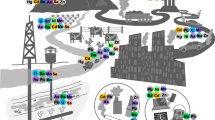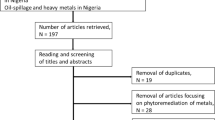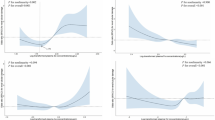Abstract
During the past 40 years, the National Institute of Standards and Technology (NIST) has developed over 180 natural matrix Standard Reference Materials® (SRMs) for the determination of trace organic constituents in environmental, clinical, food, and dietary supplement matrices. A list of the Top Ten SRMs intended for organic analysis was identified based on selection criteria including analytical challenge to assign certified values, challenges in material preparation, novel matrices, longevity, widespread use, and unique design concept or intended use. The environmental matrix SRMs include air particulate matter, marine sediment, mussel tissue, and human serum with the focus on contaminants such as polycyclic aromatic hydrocarbons (PAHs), polychlorinated biphenyls (PCBs), chlorinated pesticides, and polybrominated diphenyl ethers (PBDEs). Human serum and plasma SRMs for clinical diagnostic markers including vitamin D metabolites represent clinical analysis, whereas infant formula, multivitamin/multielement tablets, and Ginkgo biloba constitute the food and dietary supplement matrices on the list. Each of the SRMs on the Top Ten list is discussed relative to the selection criteria and significance of the material, and several overall lessons learned are summarized.
Graphical abstract







Similar content being viewed by others
References
Wise SA, Poster DL, Kucklick JR, Keller JM, VanderPol SS, Sander LC, et al. Standard Reference Materials (SRMs) for determination of organic contaminants in environmental samples. Anal Bioanal Chem. 2006;386(4):1153–90. https://doi.org/10.1007/s00216-006-0719-4.
Ulberth F. Certified reference materials for inorganic and organic contaminants in environmental matrices. Anal Bioanal Chem. 2006;386(4):1121–36. https://doi.org/10.1007/s00216-006-0660-6.
Hillebrand WF. Standard methods of sampling and analysis and standard samples. J Ind Eng Chem. 1916;8(5):466–9.
Yolken HT. The national Standard Reference Material program in the U.S.A. In: Seward RD, editor. Proceedings of the 6th Materials Research Symposium, NBS Spec. Publ. 408. Gaitherburg: National Bureau of Standards; 1973.
Cali JP, Reed WP. The role of the National Bureau of Standards Standard Reference Materials in accurate trace analysis. In: LaFleur PD, editor. Proceedings of the 7th Materials Research Symposium, NBS Mongraph 148. Gaithersburg: NBS; 1974.
Epstein MS. The independent method concept for certifying chemical composition in reference materials. Spectrochim Acta B At Spectrosc. 1991;46(12):1583–91. https://doi.org/10.1016/0584-8547(91)80162-v.
May WE, Parris RM, Beck CM II, Fassett JD, Greenberg RR, Guenther FR, et al. Definitions of terms and modes used at NIST for value assignment of reference materials for chemical measurement. NIST Special 260-136. Gaithersburg: National Institute of Standards and Technology; 2000.
Beauchamp CRC, Carney JE, Choquette SJ, Cole KD, DeRose PC, Epstein MS, et al. Metrological tools for the reference materials and reference instruments of the NIST Materials Measurement Laboratory, NIST Special Publication 260–136. Washington: U.S. Government Printing Office; 2020.
Hertz HS, May WE, Wise SA, Chesler SN. Trace organic analysis. Anal Chem. 1978;50(4):A428. https://doi.org/10.1021/ac50026a001.
Hertz HS, Brown JM, Chesler SN, Guenther FR, Hilpert LR, May WE, et al. Determination of individual organic compounds in shale oil. Anal Chem. 1980;52(11):1650–7. https://doi.org/10.1021/ac50061a027.
Wise SA, Phinney KW, Sander LC, Schantz MM. Role of chromatography in the development of Standard Reference Materials for organic analysis. J Chromatogr A. 2012;1261:3–22. https://doi.org/10.1016/j.chroma.2012.05.093.
May WE, Wise SA. Liquid chromatographic determination of polycyclic aromatic hydrocarbons in air particulate extracts. Anal Chem. 1984;56(2):225–32. https://doi.org/10.1021/ac00266a024.
Schantz MM, McGaw E, Wise SA. Pressurized liquid extraction of diesel and air particulate Standard Reference Materials: effect of extraction temperature and pressure. Anal Chem. 2012;84(19):8222–31. https://doi.org/10.1021/ac301443v.
Wise SA, Sander LC, Schantz MM, Hays MJ, Benner BA. Recertification of Standard Reference Material (SRM) 1649, urban dust, for the determination of polycyclic aromatic hydrocarbons (PAHs). Polycycl Aromat Compd. 1999;13(4):419–56.
Schantz MM, Nichols JJ, Wise SA. Evaluation of pressurized fluid extraction for the extraction of environmental matrix reference materials. Anal Chem. 1997;69(20):4210–9. https://doi.org/10.1021/ac970299c.
Benner BA. Summarizing the effectiveness of supercritical fluid extraction of polycyclic aromatic hydrocarbons from natural matrix environmental samples. Anal Chem. 1998;70(21):4594–601. https://doi.org/10.1021/ac980618f.
Bergvall C, Westerholm R. Determination of 252-302 Da and tentative identification of 316-376 Da polycyclic aromatic hydrocarbons in Standard Reference Materials 1649a urban dust and 1650b and 2975 diesel particulate matter by accelerated solvent extraction-HPLC-GC-MS. Anal Bioanal Chem. 2008;391(6):2235–48. https://doi.org/10.1007/s00216-008-2182-x.
Schantz MM, Cleveland D, Heckert NA, Kucklick JR, Leigh SD, Long SE, et al. Development of two fine particulate matter Standard Reference Materials (< 4 μm and < 10 μm) for the determination of organic and inorganic constituents. Anal Bioanal Chem. 2016;408(16):4257–66. https://doi.org/10.1007/s00216-016-9519-7.
Piascik M, Perez Przyk E, Held A. The certification of the mass fractions of selected polycyclic aromatic hydrocarbons (PAHs) in fine dust (PM10-like matrix) - Certified Reference Material ERM-CZ100. Geel: Certification Report. Institute for Reference Materials amd Measurements; 2019.
Charoud-Got J, Emma G, Seghers J, Tumba-Tshilumba MF, Santoro A, Held A, et al. Preparation of a PM2.5-like reference material in sufficient quantities for accurate monitoring of anions and cations in fine atmospheric dust. Anal Bioanal Chem. 2017;409(30):7121–31. https://doi.org/10.1007/s00216-017-0670-6.
Wise SA, Chesler SN, Hertz HS, Hilpert LR, May WE. Chemically-bonded aminosilane stationary phase for high performance liquid chromatographic separation of polynuclear aromatic compounds. Anal Chem. 1977;49(14):2306–10. https://doi.org/10.1021/ac50022a049.
Schantz MM, Benner BA, Chesler SN, Koster BJ, Hehn KE, Stone SF, et al. Preparation and analysis of a marine sediment reference material for the determination of trace organic constituents. Fresenius J Anal Chem. 1990;338(4):501–14. https://doi.org/10.1007/bf00322527.
Wise SA, Schantz MM, Benner BA, Hays MJ, Schiller SB. Certification of polycyclic aromatic hydrocarbons in a marine sediment Standard Reference Material. Anal Chem. 1995;67(7):1171–8. https://doi.org/10.1021/ac00103a006.
Wise SA, Poster DL, Schantz MM, Kucklick JR, Sander LC, Lopez de Alda MJ, et al. Two new marine sediment Standard Reference Materials (SRMs) for the determination of organic contaminants. Anal Bioanal Chem. 2004;378(5):1251–64. https://doi.org/10.1007/s00216-003-2431-y.
Farrington JW, Tripp BW, Tanabe S, Subramanian A, Sericano JL, Wade TL, et al. Edward D. Goldberg’s proposal of “the Mussel Watch”: reflections after 40 years. Mar Pollut Bull. 2016;110(1):501–10. https://doi.org/10.1016/j.marpolbul.2016.05.074.
Zeisler R, Langland JK, Harrison SH. Cryogenic homogenization of biological tissues. Anal Chem. 1983;55(14):2431–4. https://doi.org/10.1021/ac00264a055.
Wise SA, Benner BA, Christensen RG, Koster BJ, Kurz J, Schantz MM, et al. Preparation and analysis of a frozen mussel tissue reference material for the determination of trace organic constituents. Environ Sci Technol. 1991;25(10):1695–704. https://doi.org/10.1021/es00022a003.
Poster DL, Schantz MM, Kucklick JR, Lopez de Alda MJ, Porter BJ, Pugh R, et al. Three new mussel tissue standard reference materials (SRMs) for the determination of organic contaminants. Anal Bioanal Chem. 2004;378(5):1213–31. https://doi.org/10.1007/s00216-003-2401-4.
Schantz MM, Demiralp R, Greenberg RR, Hays MJ, Parris RM, Porter BJ, et al. Certification of a frozen mussel tissue standard reference material (SRM 1974a) for trace organic constituents. Fresenius J Anal Chem. 1997;358(3):431–40. https://doi.org/10.1007/s002160050442.
Moors AJ, Pugh RS, Evans JR, Ness JM, Ellisor DL, Bachman MJ. Standard Operation Procedures (SOPs) for the Pall VM-KT vibrating cryomill: production of fresh frozen Standard Reference and Control Materials (SRMs/CMs) at the NIST reference material production facility. NISTIR, vol. NIST SP 1196: National Institute of Standards and Technology; 2016. https://doi.org/10.6028/NIST.SP.1196.
Schantz MM, Pugh RS, Vander Pol SS, Wise SA. Long-term stability and temporal trends of organic contaminants in four collections of mussel tissue frozen standard reference materials. Anal Bioanal Chem. 2015;407(11):3253–8. https://doi.org/10.1007/s00216-015-8524-6.
Donais MK, Uden PC, Schantz MM, Wise SA. Development, validation, and application of a method for quantification of methylmercury in biological marine materials using gas chromatography atomic emission detection. Anal Chem. 1996;68(21):3859–66. https://doi.org/10.1021/ac960438a.
Tutschku S, Schantz MM, Horvat M, Logar M, Akagi H, Emons H, et al. Certification of the methylmercury content in SRM 2977 mussel tissue (organic contaminants and trace elements) and SRM 1566b oyster tissue. Fresenius J Anal Chem. 2001;369(3–4):364–9. https://doi.org/10.1007/s002160000640.
Tutschku S, Schantz MM, Wise SA. Determination of methylmercury and butyltin compounds in marine biota and sediments using microwave-assisted acid extraction, solid-phase microextraction, and gas chromatography with microwave-induced plasma atomic emission spectrometric detection. Anal Chem. 2002;74(18):4694–701. https://doi.org/10.1021/ac020128u.
Schantz MM, Koster BJ, Oakley LM, Schiller SB, Wise SA. Certification of polychlorinated biphenyl congeners and chlorinated pesticides in a whale blubber Standard Reference Material. Anal Chem. 1995;67(5):901–10. https://doi.org/10.1021/ac00101a017.
Poster DL, Kucklick JR, Schantz MM, Porter BJ, Leigh SD, Wise SA. Determination of polychlorinated biphenyl congeners and chlorinated pesticides in a fish tissue Standard Reference Material. Anal Bioanal Chem. 2003;375(2):223–41. https://doi.org/10.1007/s00216-002-1680-5.
Schantz MM, Keller JM, Leigh S, Patterson DG, Sharpless KE, Sjodin A, et al. Certification of SRM 1589a PCBs, pesticides, PBDEs, and dioxins/furans in human serum. Anal Bioanal Chem. 2007;389(4):1201–8. https://doi.org/10.1007/s00216-007-1519-1.
Schantz MM, Parris RM, Kurz J, Ballschmiter K, Wise SA. Comparison of methods for the gas chromatographic determination of PCB congeners and chlorinated pesticides in marine reference materials. Fresenius J Anal Chem. 1993;346(6–9):766–78. https://doi.org/10.1007/bf00321288.
Schantz MM, Parris RM, Wise SA, Won HT, Turle R. Polychlorinated biphenyl (PCB) congeners and chlorinated pesticides in a cod liver oil reference material. Chemosphere. 1992;24(12):1687–98. https://doi.org/10.1016/0045-6535(92)90223-e.
Schantz MM, Eppe G, Focant JF, Hamilton C, Heckert NA, Heltsley RM, et al. Milk and serum Standard Reference Materials for monitoring organic contaminants in human samples. Anal Bioanal Chem. 2013;405(4):1203–11. https://doi.org/10.1007/s00216-012-6524-3.
Rodowa A, Reiner JL. Utilization of a NIST SRM: a case study for per- and polyfluoroalkyl substances in NIST SRM 1957 organic contaminants in non-fortified human serum. Anal Bioanal Chem. 2021;413:2295–301.
Schantz MM, Benner BA, Heckert NA, Sander LC, Sharpless KE, Vander Pol SS, et al. Development of urine Standard Reference Materials for metabolites of organic chemicals including polycyclic aromatic hydrocarbons, phthalates, phenols, parabens, and volatile organic compounds. Anal Bioanal Chem. 2015;407(11):2945–54. https://doi.org/10.1007/s00216-014-8441-0.
Wise SA, Phillips MM. Evolution of reference materials for the determination of organic nutrients in food and dietary supplements-a critical review. Anal Bioanal Chem. 2019;411(1):97–127. https://doi.org/10.1007/s00216-018-1473-0.
Sharpless KE, Schiller SB, Margolis SA, Thomas JB, Iyengar GV, Colbert JC, et al. Certification of nutrients in Standard Reference Material 1846: infant formula. J AOAC Int. 1997;80(3):611–21.
Sharpless KE, Lindstrom RM, Nelson BC, Phinney KW, Rimmer CA, Sander LC, et al. Preparation and characterization of Standard Reference Material 1849 infant/adult nutritional formula. J AOAC Int. 2010;93(4):1262–74.
Konings EJM, Roux A, Reungoat A, Nicod N, Campos-Gimenez E, Ameye L, et al. Challenge to evaluate regulatory compliance for nutrients in infant formulas with current state-of-the-art analytical reference methods. Food Control. 2021;119. https://doi.org/10.1016/j.foodcont.2020.107423.
Sullivan D. Modernization of AOAC nutrient methods by stakeholder panel on infant formula and adult nutritionals. J AOAC Int. 2016;99(1):3–6. https://doi.org/10.5740/jaoacint.15-0248.
Wargo WF. Reference materials: critical importance to the infant formula industry. J AOAC Int. 2017;100(5):1376–8. https://doi.org/10.5740/jaoacint.17-0231.
Sander LC, Sharpless KE, Satterfield MB, Ihara T, Phinney KW, Yen JH, et al. Determination of ephedrine alkaloids in dietary supplement Standard Reference Materials. Anal Chem. 2005;77(10):3101–12. https://doi.org/10.1021/ac0484530.
Top 100 dietary supplements by U.S. sales. 2006 Supplement Business Report, Nutr Bus J., Pelton Media Inc.
Top 100 supplements by 2020 U.S. consumer sales. 2021 Supplement Business Report, Nutr Bus J., Pelton Media Inc.
Rimmer CA, Howerton SB, Sharpless KE, Sander LC, Long SE, Murphy KE, et al. Characterization of a suite of ginkgo-containing Standard Reference Materials. Anal Bioanal Chem. 2007;389(1):179–96. https://doi.org/10.1007/s00216-007-1398-5.
Top 100 dietary supplement by 2019 U.S. sales. 2020 Supplement Business Report, Nutr Bus J., Penton Media Inc.
Roseland JM, Holden JM, Andrews KW, Zhao C, Schweitzer A, Harnly J, et al. Dietary supplement ingredient database (DSID): preliminary USDA studies on the composition of adult multivitamin/mineral supplements. J Food Compos Anal. 2008;21:S69–77. https://doi.org/10.1016/j.jfca.2007.07.009.
Dietary Supplement Ingredient Database, National Institutes of Health Office of Dietary Supplements and U.S. Department of Agriculture. www.dietarysupplementdatabase.usda.nih.gov. Accessed 13 Jul 2021
Sander LC, Sharpless KE, Wise SA, Nelson BC, Phinney KW, Porter BJ, et al. Certification of vitamins and carotenoids in SRM 3280 multivitamin/multielement tablets. Anal Chem. 2011;83(1):99–108. https://doi.org/10.1021/ac101953u.
Phinney KW, Rimmer CA, Thomas JB, Sander LC, Sharpless KE, Wise SA. Isotope dilution liquid chromatography-mass spectrometry methods for fat- and water-soluble vitamins in nutritional formulations. Anal Chem. 2011;83(1):92–8. https://doi.org/10.1021/ac101950r.
Ellerbe P, Cohen A, Welch MJ, White E. Determination of serum uric acid by isotope dilution mass spectrometry as a new candidate definitive method. Anal Chem. 1990;62(20):2173–7. https://doi.org/10.1021/ac00219a004.
Ellerbe P, Meiselman S, Sniegoski LT, Welch MJ, White E. Determination of serum-cholesterol by a modification of the isotope dilution mass spectrometric definitive method. Anal Chem. 1989;61(15):1718–23. https://doi.org/10.1021/ac00190a025.
Welch MJ, Cohen A, Hertz HS, Ng KJ, Schaffer R, Vanderlijn P, et al. Determination of serum creatinine by isotope dilution mass spectrometry as a candidate definitive method. Anal Chem. 1986;58(8):1681–5. https://doi.org/10.1021/ac00121a018.
Welch MJ, Cohen A, Hertz HS, Ruegg FC, Schaffer R, Sniegoski LT, et al. Determination of serum urea by isotope dilution mass spectrometry as a candidate definitive method. Anal Chem. 1984;56(4):713–9. https://doi.org/10.1021/ac00268a028.
Dodder NG, Tai SSC, Sniegoski LT, Zhang NF, Welch MJ. Certification of creatinine in a human serum reference material by GC-MS and LC-MS. Clin Chem. 2007;53(9):1694–9. https://doi.org/10.1373/clinchem.2007.090027.
Tai SSC, Bedner M, Phinney KW. Development of a candidate reference measurement procedure for the determination of 25-hydroxyvitamin D3 and 25-hydroxyvitamin D2 in human serum using isotope dilution liquid chromatography-tandem mass spectrometry. Anal Chem. 2010;82(5):1942–8. https://doi.org/10.1021/ac9026862.
Joint Committee for Guides in Metrology (JCGM). International vocabulary of metrology-basic and general concepts and associated terms (VIM), vol. JCGM 200. 3rd ed: International Bureau of Weights and Measures (BIPM); 2012. available bipm.org/en/committees/jc/jcgm/publications. Accessed 17 Jun 2021
International Organization for Standardization (ISO). In vitro diagnostic devices-measurement of quantities in samples of biological origin-requirements for content and presentation of reference measurement procedures, vol. 15193: ISO; 2009. p. 2009.
Schimmel H, Zegers I. Performance criteria for reference measurement procedures and reference materials. Clin Chem Lab Med. 2015;53(6):899–904. https://doi.org/10.1515/cclm-2015-0104.
Joint Committee on Traceability in Laboratory Medicine (JCTLM), International Bureau of Weights and Measures (BIPM), bipm.org/en/committees/jc/jctlm. Accessed 17 Jun 2021.
Phinney KW, Bedner M, Tai SSC, Vamathevan VV, Sander LC, Sharpless KE, et al. Development and certification of a standard reference material for vitamin D metabolites in human serum. Anal Chem. 2012;84(2):956–62. https://doi.org/10.1021/ac202047n.
Phinney KW, Tai SSC, Bedner M, Camara JE, Chia RRC, Sander LC, et al. Development of an improved Standard Reference Material for vitamin D metabolites in human serum. Anal Chem. 2017;89(9):4907–13. https://doi.org/10.1021/acs.analchem.6b05168.
Tai SSC, Nelson MA, Bedner M, Lang BE, Phinney KW, Sander LC, et al. Development of Standard Reference Material (SRM) 2973 vitamin D metabolites in frozen human serum (high level). J AOAC Int. 2017;100(5):1294–303. https://doi.org/10.5740/jaoacint.17-0182.
Tai SSC, Nelson MA. Candidate reference measurement procedure for the determination of (24R),25-dihydroxyvitamin D3 in human serum using isotope-dilution liquid chromatography-tandem mass spectrometry. Anal Chem. 2015;87(15):7964–70. https://doi.org/10.1021/acs.analchem.5b01861.
Boggs ASP, Kilpatrick LE, Burdette CQ, Tevis DS, Fultz ZA, Nelson MA, et al. Development of a pregnancy-specific reference material for thyroid biomarkers, vitamin D, and nutritional trace elements in serum. Clin Chem Lab Med. 2021;59(4):671–9. https://doi.org/10.1515/cclm-2020-0977.
Phinney KW, Ballihaut G, Bedner M, Benford BS, Camara JE, Christopher SJ, et al. Development of a Standard Reference Material for metabolomics research. Anal Chem. 2013;85(24):11732–8. https://doi.org/10.1021/ac402689t.
Di Giovanni N, Meuwis MA, Louis E, Focant JF. Untargeted serum metabolic profiling by comprehensive two-dimensional gas chromatography-high resolution time-of-flight mass spectrometry. J Proteome Res. 2020;19(3):1013–28. https://doi.org/10.1021/acs.jproteome.9b00535.
Siskos AP, Jain P, Romisch-Margl W, Bennet M, Achaintre D, Asad Y, et al. Interlaboratory reproducibility of a targeted metabolomics platform for analysis of human serum and plasma. Anal Chem. 2017;89(1):656–65. https://doi.org/10.1021/acs.analchem.6b02930.
Thompson JW, Adams KJ, Adamski J, Asad Y, Borts D, Bowden JA, et al. International ring trial of a high resolution targeted metabolomics and lipidomics platform for serum and plasma analysis. Anal Chem. 2019;91(22):14407–16. https://doi.org/10.1021/acs.analchem.9b02908.
Ulmer CZ, Ragland JM, Koelmel JP, Heckert A, Jones CM, Garrett TJ, et al. LipidQC: method validation tool for visual comparison to SRM 1950 using NIST interlaboratory comparison exercise lipid consensus mean estimate values. Anal Chem. 2017;89(24):13069–73. https://doi.org/10.1021/acs.analchem.7b04042.
Burla B, Arita M, Arita M, Bendt AK, Cazenave-Gassiot A, Dennis EA, et al. MS-based lipidomics of human blood plasma: a community-initiated position paper to develop accepted guidelines. J Lipid Res. 2018;59(10):2001–17. https://doi.org/10.1194/jlr.S087163.
Vesper HW, Miller WG, Myers GL. Reference materials and commutability. Clin Biochem Rev. 2007;28:139–47.
Acknowledgements
The significant contributions of many colleagues at NIST who contributed to the development of the SRMs described in this paper are acknowledged, and in particular the creativity and enthusiasm of the following individuals: Michele M. Schantz, Michael J. Welch, Karen W. Phinney, Lane C. Sander, Katherine E. Sharpless, Susan S-C. Tai, Catherine A. Rimmer, Melissa M. Phillips, Barbara J. Porter, Rebecca S. Pugh, and Rolf Zeisler. In addition, the significant contributions and support of scientists at other government agencies who recognized the need for SRMs and advocated for their production are acknowledged including Nancy Foster, Gunnar Lauenstein, Ted I. Lillestollen, and Terri K. Rowles at NOAA; Donald G. Patterson, Christine M. Pfeiffer, and Rosemary L. Schleicher at CDC; Joellen Lewtas at EPA; Arthur L. Castle at NIH National Institute of Diabetes and Digestive and Kidney Diseases (NIDDK); and Paul M. Coates, Joseph M. Betz, Adam J. Kuszak, and Christopher T. Sempos at NIH-ODS.
Author information
Authors and Affiliations
Corresponding author
Ethics declarations
Conflict of interest
The author is an editor of the journal Analytical and Bioanalytical Chemistry and was not involved in peer reviewing this manuscript. The author declares no competing interests.
Additional information
Publisher’s note
Springer Nature remains neutral with regard to jurisdictional claims in published maps and institutional affiliations.
Published in the topical collection celebrating ABCs 20th Anniversary.
Supplementary information
ESM 1
(DOCX 11200 kb)
Rights and permissions
About this article
Cite this article
Wise, .A. From urban dust and marine sediment to Ginkgo biloba and human serum—a top ten list of Standard Reference Materials (SRMs). Anal Bioanal Chem 414, 31–52 (2022). https://doi.org/10.1007/s00216-021-03527-w
Received:
Revised:
Accepted:
Published:
Issue Date:
DOI: https://doi.org/10.1007/s00216-021-03527-w




